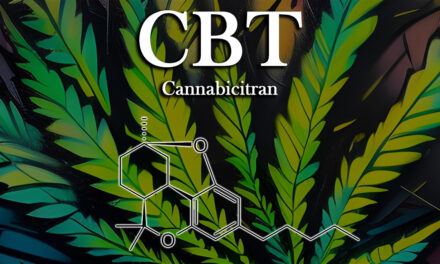The Hemp Farming Act of 2018 was an important step towards legalizing hemp production in the United States. But what is hemp and why is it so important? In this article, we’ll take a deep dive into the act, exploring what hemp is useful for, some history around hemp, and what the Act means for the future of hemp farming in the United States.
Introduction to the Hemp Farming Act of 2018
In December 2018, the United States Congress passed the Hemp Farming Act of 2018. The act was signed into law by President Trump on December 20th, 2018, making hemp production legal in the United States. This was a major step forward for the hemp and cannabis industry, as hemp had been classified as a Schedule I drug since 1970 and production was prohibited in most parts of the country. The new law has opened the industry to a wide range of new opportunities and potential applications by no longer classifying it as a Schedule I drug, and making all cannabis hemp products legal federally across the entire United States so long as it contains less than 0.3% THC.
What is hemp?
Hemp is a variety of the cannabis sativa plant species. It is a versatile crop that has been cultivated for centuries for its fibers, oils, and medicinal compounds. Hemp is distinct from marijuana, another variety of cannabis sativa, in that it contains very low levels of the psychoactive compound tetrahydrocannabinol (THC). Hemp contains high levels of the non-psychoactive compound cannabidiol (CBD), which is believed to have many therapeutic benefits. Various strains of hemp can be grown for specific purposes such as food production, clothing, medicine, building materials, fuel, and more.
It is truly a versatile and amazing plant, allowing for upwards to 4 grow cycles per year, making it an effective replacement for growing certain crops or chopping down trees. Its fibers can be used to make rope, fabric, paper, and many other products. Hemp oil can be used for cooking, biodiesel for diesel engines, and as a dietary supplement to get omega-6 and omega-3 fats which are “good fats” needed in a regular diet. Hemp-derived CBD is becoming increasingly popular as a natural remedy for a wide range of ailments as well, and due to the federally legal status of it, it is now becoming increasingly accessible everywhere.
Hemp is also an incredibly sustainable crop. It is naturally resistant to pests and requires minimal water, fertilizer, and pesticides compared to other crops. Hemp has a deep root system, which helps to prevent soil erosion and can even help to remediate contaminated soils. Hemp could potentially solve many of our problems with soil fertility, and severely cut back contaminated soils from nuclear waste, plastics, and more.
History of hemp in the United States
Hemp has a long history in the United States. It first brought to North America in 1545 when Spanish colonization started. During the entirety of the colonial period, hemp was one of the most important crops and flourished in States such as Kentucky, Missouri, and Illinois during the 1840s-1860s. Much of this hemp was used for sailcloth but also for cloth, bags, paper, and other various products.
Hemp production in the United States declined sharply during the early 20th century, due in part to the introduction of synthetic fibers and the passage of the Marihuana Tax Act of 1937, which classified hemp as a Schedule I drug and prohibited its cultivation. It picked back up major production not long after due to World War II with various imports being unavailable, hemp was needed as a substitute for fiber and cloth. Production peaked in 1943 and 1944 but after the war ended production majorly declined as legal restrictions were reinforced. Hemp production was further restricted in 1970 with the passage of the Controlled Substances Act, which classified all varieties of Cannabis sativa as Schedule I drugs and prohibited their cultivation.
That would all change once the Hemp Farming Act of 2018 was passed into law. This federal law removed hemp from the Controlled Substances Act, allowing it to be legally cultivated and processed in the United States. The act also established regulations for hemp production, including licensing and testing requirements.
The Hemp Farming Act of 2018 was signed into law as part of the 2018 Farm Bill. The Farm Bill also included a provision that allowed states to submit plans to the US Department of Agriculture for the regulation of hemp production in their state.
The act also provided funding for research into hemp cultivation and processing, as well as education and outreach programs to help farmers learn how to grow and process hemp. Additionally, the act made it easier for farmers to obtain crop insurance for hemp crops, which had previously been difficult to obtain.
The future of hemp farming in the United States
The Hemp Farming Act of 2018 has opened a world of possibilities for many industries beyond just cannabis in the United States. The act has allowed hemp production to be legalized in all 50 states, established regulations for hemp production, and provided funding for research and education.
As hemp production continues to grow in the United States, we can expect to see more hemp-derived products on the market, such as CBD oil, hemp fabrics, and hemp paper. Hemp could also become an important part of the agricultural industry, providing farmers with an alternative crop that is sustainable and profitable, and to protect our eco system by limiting pesticide usage and limiting soil erosion.
The Hemp Farming Act of 2018 was an important step towards a better future for all Americans, and it has the potential to revolutionize the world and the way we conduct ourselves in manufacturing products and producing foods and medicines. If you’re interested in getting involved in the hemp industry, now is the time to get started as there is still much to be learned, researched, and is still in major development. Be sure to look up your State Laws on what licensing you’ll need depending on what you’re looking to do, and good luck!












